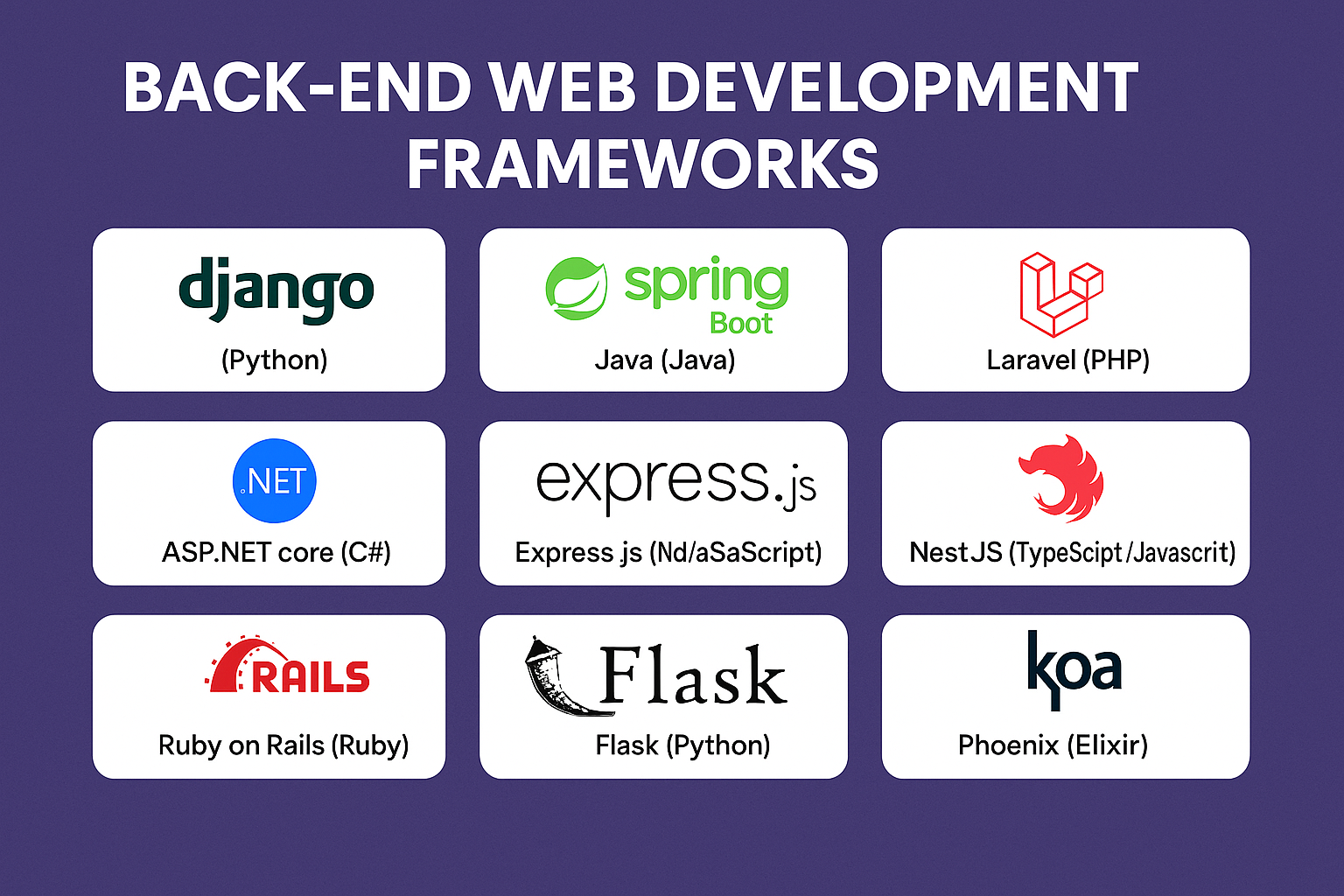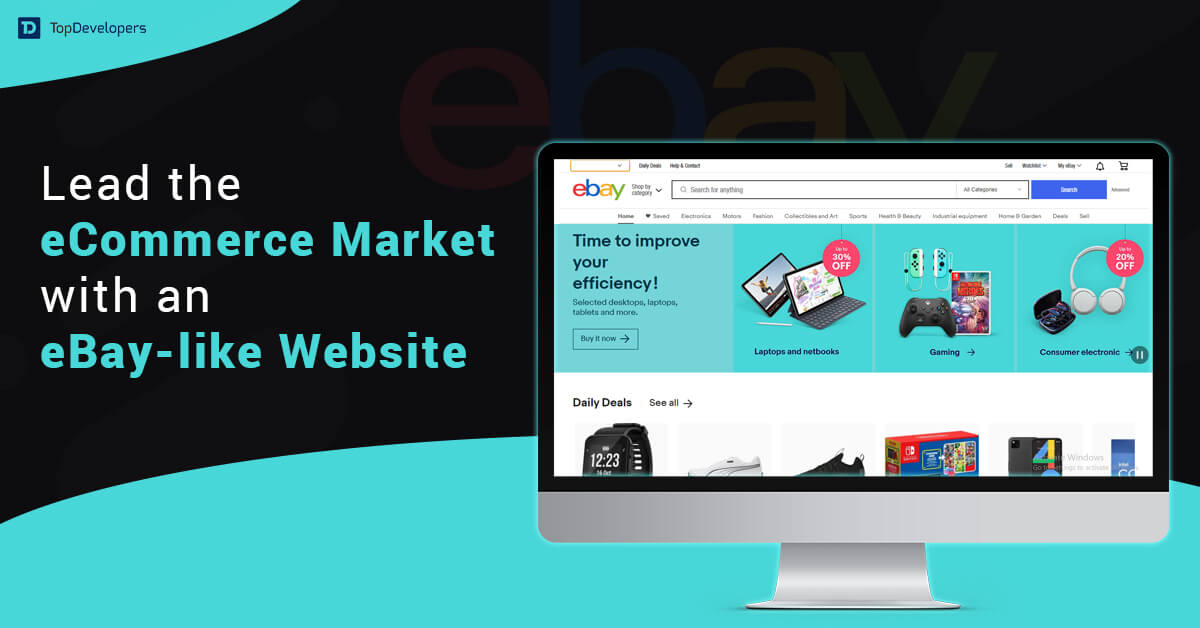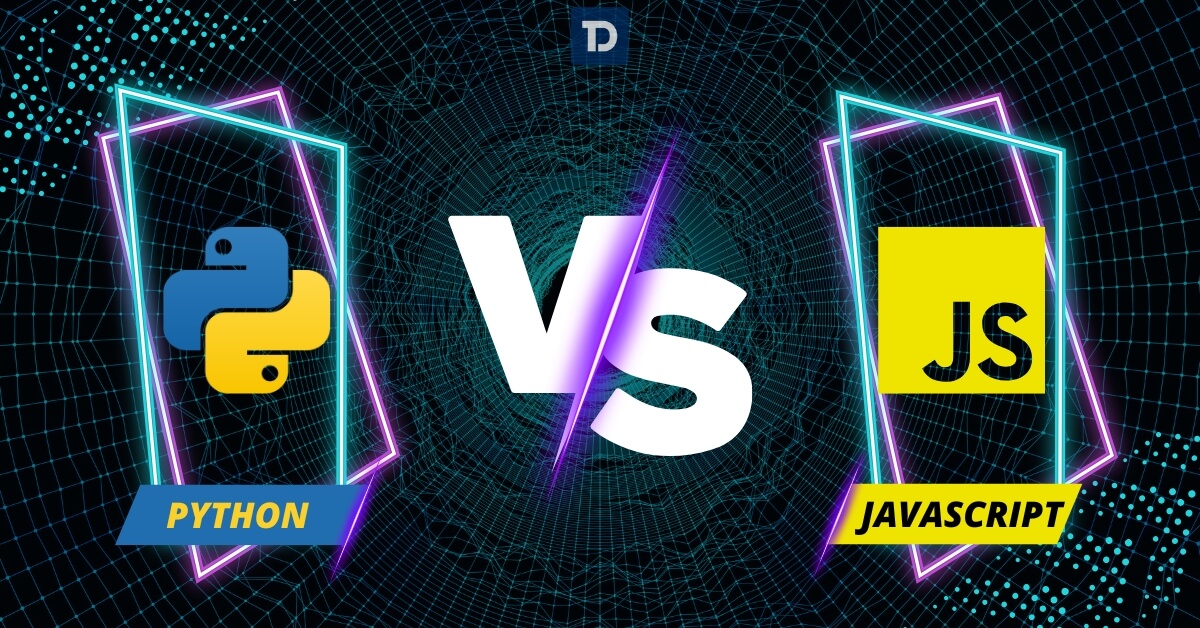
A web development framework gives creators of contemporary software applications a ready-made basis. Frameworks provide a consistent beginning point with many necessary components already integrated, instead of requiring starting from nothing and creating every single feature. Consider it as building a structure: instead of starting from the foundation and erecting the structure yourself, you start with the critical elements—like the structural beams—already in place and tested for stability.
So, what makes frameworks so valuable for web development?
Designed and worked on by thousands of developers, frameworks provide a solid, consistent foundation upon which web developers may design scalable, high-performing applications. Designed to simplify the web development process by lowering repetitious activities, they include built-in libraries, code modules, toolsets, APIs, and compilers. Common website elements, including forms, menus, authentication systems, and security protocols, can thus be swiftly developed, freeing developers to concentrate on more complicated capabilities.
According to Business Research Insights, “the global web development market size was USD 65.35 billion in 2025, and the market is projected to touch USD 130.9 billion by 2032 at a CAGR of 8.03% during the forecast period.” Clearly, frameworks are significant in determining the direction of digital applications. Over eighty percent of developers now give frameworks that provide security, scalability, and speed top priority, based on the 2024 State of JavaScript Survey. In the ever-changing landscape of AI-driven tools, real-time data processing, and edge computing, the framework choice becomes even more crucial for development to remain competitive.
Both front-end and back-end development have thousands of frameworks available, each with special advantages and features. Leading web development companies use these models to create creative and highly functional applications. Whether your project is creating a highly interactive user interface or lightning-fast, performance-oriented web software, these frameworks offer the capabilities to squarely address contemporary development concerns.
This paper will discuss the leading front-end and back-end web development frameworks that will dominate the scene in 2025. From quick, light solutions to complete, full-stack architectures, you will discover which technologies are laying the groundwork for the direction of web development.
Table of Contents
Back-End Web Development Frameworks
Handling the main server-side tasks and guaranteeing seamless operations behind the scenes depend much on back-end web development frameworks. They not only aid in the effective management of databases, APIs, and application logic, but also establish a robust foundation that supports sophisticated web applications. Among several programming languages used in the construction of these frameworks are Java, PHP, Laravel(Laravel developers), Node.js, Ruby on Rails, (ROR developers) and Python. Furthermore, they are especially meant to promote scalability, improve security aspects, and streamline the creation of strong, data-driven applications. Back-end systems significantly speed up the development process and ensure that applications operate securely and efficiently, whether they are simple APIs or large enterprise projects. These are several in-depth back-end development models among the best ones.
-
Django (Python)
- The Python framework is excellent, emphasizing quick development and elegant design.
- Pros: totally loaded (ORM, admin panel, authentication), safe by default, excellent documentation, active community, scalable for business apps.
- Cons: can be overkill for basic apps; monolithic (less flexible for microservices)
- Applied by Pinterest, Instagram, and Disqus.
-
Spring Boot (Java)
- Designed on the Spring environment, this enterprise-ready framework is perfect for microservices and Java projects prepared for production.
- Pros: built-in microservices/cloud compatibility, strong security, vast ecosystem. Battle-tested, sturdy security
- Netflix, Amazon, and Google Cloud all use verbose syntax; a high learning curve for beginners is a drawback.
-
Laravel (PHP)
- A clean PHP framework includes built-in tools and expressive syntax.
- Pros include developed tools such as authentication, queues, and mail; a clean syntax; developer-friendliness; an active community; and an excellent ecosystem.
- Cons: PHP stigma; not perfect for high-concurrency programs.
- It was utilized by 9GAG, Pfizer, and BBC.
-
ASP.NET core (C#)
- Microsoft’s contemporary cross-platform framework for safe and high-performance web apps
- Pros include modular construction, built-in security, flawless web technology integration, and great scalability.
- Cons: some limited customizing options, perhaps more development or deployment expenses.
-
Express.js (Node.js/JavaScript)
- Perfect for APIs and real-time programs, Node.js has a minimalistic, quick, adaptable architecture.
- Pros: perfect for RESTful APIs; lightweight, high performance; large npm ecosystem
- Cons: minimal out-of-the-box capabilities; giant apps call for additional hand-operated setup.
-
NestJS (TypeScript/JavaScript)
- Designed using TypeScript, a modular Node.js framework fit for scalable, business-grade projects.
- Pros: include scalable modern architecture supported by microservices, excellent TypeScript integration,
- Cons: younger, therefore smaller community than some options; more complicated than Express.js.
-
Ruby on Rails (Ruby)
- Automation and fast prototyping convention-over-configuration framework
- Pros include quick development, plenty of built-in amenities, and a close community.
- Cons: Less well-liked for new projects; may be sluggish for large-scale programs.
-
Flask (Python)
- Perfect for small applications and APIs, lightweight, adaptable Python micro-framework
- Pros include being basic, quick to learn, understated, and highly configurable.
- Cons: more hand labor for big projects; fewer built-in tools than Django.
-
Koa.js (JavaScript)
- Modern Node.js framework, lightweight with asynchronous/await capability.
- Pros: minimalist, modern, excellent for APIs, adaptable.
- Cons: Less middleware out-of-the-box and a smaller ecosystem are drawbacks.
-
Phoenix (Elixir)
- Designed on Elixir, a real-time, high-concurrency framework perfect for high-traffic applications.
- Pros: Excellent for real-time features; high performance; fault-tolerant.
- Cons: younger ecology, smaller talent pool.
Front-End Web Development Frameworks
Designed to provide the user interface of online applications, front-end frameworks are vital instruments. Among other technologies, React(React.JS developers), Next.js, Bootstrap, jQuery, and JavaScript all form part of these frameworks. Their main applications are in UI/UX design, SEO optimization management, UI component handling, and web template and snippet development. These systems also help create dynamic and responsive user interfaces.
Apart from these characteristics, front-end architectures include pre-built components and libraries, thereby streamlining the development, testing, and implementation of premium web apps. From lightweight libraries to all-encompassing systems, these techniques are applied to provide interesting user experiences while preserving the best speed and scalability. Let’s examine the most often used ones closely.
-
React
- The library was designed and maintained by Meta (Facebook), making it the best front-end library for 2025.
- Key characteristics of component-based architecture are virtual DOM for effective updates, JSX syntax, React Hooks for state management, and a solid ecosystem.
- Strengths: Excellent points include highly scalable, adaptable, large community and employment market, simple integration with other frameworks, and excellent support of mobile via React Native.
- Ideal For: Perfect for big, interactive, dynamic projects needing scalability and long-term maintenance; teams seeking flexibility.
-
Angular
- JS developers Fully developed framework kept up by Google; mostly applied in corporate settings.
- Key Features: MVC design, TypeScript-based, two-way data binding, dependency injection, built-in CLI, strong state management, thorough testing tools.
- Strengths: all-in-one solution, disciplined and opinionated, excellent for large-scale and sophisticated programs, long-term support.
- Perfect for enterprise applications, projects needing built-in tools and structure, and teams conversant with TypeScript.
-
Vue.js
- Easy learning curve and flexible integration; progressive JavaScript framework
- Key Features: Component-based, virtual DOM, single-file components (SFCs), reactive data binding, lightweight, strong tooling (Vue CLI, Vue Devtools).
- Strengths: simple syntax, fast development, adaptability for both small and large projects, and growing community.
- Ideal For: Startups, MVPs, single-page apps, and teams seeking rapid development and easy onboarding.
-
Svelte
- There is no virtual DOM in the modern, compiler-based architecture.
- Key Features: gathers little runtime, reactive declarations, and highly efficient JavaScript code with simple syntax.
- Strengths: reduced boilerplate, small bundle size, quick performance, simple learning style.
- Perfect for lightweight, high-performance programs; projects where simplicity and speed take center stage.
-
SolidJS
- Designed with a concentration on fine-grained reactivity and performance, SolidJS is a reactive UI tool.
- Key traits include compiling to low-level JavaScript, lacking a virtual DOM, and providing very effective updates.
- Strengths: contemporary developer experience, compact bundle size, and outstanding running speed.
- Perfect For: developers looking for innovative response, performance-critical projects
-
Quick
- We designed the product for optimal performance and quick loading.
- Key traits are resumability, partial hydration, edge computing, and contemporary web standards built in mind.
- Strengths: excellent for large-scale, content-heavy websites; extremely fast starting load
- This product is ideal for sites that require instant engagement and SEO improvement.
-
Astro
- The framework and stationary site generator are designed for content-oriented websites.
- Key Features: Island architecture includes supports for several frameworks and is best suited for stationary distribution.
- The strengths of this project include performance, adaptability, and proficiency in frameworks such as React, Vue, Svelte, and others.
- This product is perfect for blogs, marketing websites, documentation, and projects loaded with material.
-
Bootstrap (UI Framework)
- Popular CSS framework for responsive design and fast prototyping • Key Features: pre-built components, grid system, mobile-first design, and Bootstrap (UI Framework).
- Strengths: a great community, constant style, and quick development.
- Ideal for quick prototypes, administrative dashboards, and sites needing consistent design.
Choosing the Right Framework to Future-Proof Your Development in 2025
Choosing a framework for 2025 is about making sure your project is relevant, scalable, and maintainable as user expectations change and technology develops, not only about present popularity. Based on the newest trends and professional guidance, this is what you should give some thought to:
-
React
- Why Choose: React stays the most future-proof framework with outstanding support from Meta (Facebook), constant updates, and an extensive ecosystem. Its supremacy guarantees a huge talent pool, long-term support, and quick acceptance of fresh web standards.
- Key Features: Component-based architecture, concurrent rendering, server components, and a developed ecosystem define key features.
- Best For: projects calling for scalability, adaptability, and a guarantee of long-term success.
-
Angular
- Why Choose: provides a clear path map, long-term Google support, and strong, opinionated design along with other things. For big, complicated projects, its TypeScript basis and enterprise-grade tools make it a dependable alternative.
- Key Features: Two-way data binding, dependency injection, thorough tooling, and excellent typing define key features.
- Best For: projects with lengthy lifetimes needing stability and structure or for enterprise applications.
-
Vue.js
- Why Choose: Vue.js is hailed for its simplicity, adaptability, and expanding community, among other things. Though not as strong as React or Angular, organizations that value quick development and simplicity of usage will find this to be a great option.
- Key Features: Reactive data binding, component-based architecture, and progressive adoption are among key characteristics.
- Best For: startups, MVPs, and initiatives requiring rapid turnaround using contemporary technologies.
-
Svelte
- Why Choose: Svelte’s minimally running and highly performing compiler-based approach Its appeal is growing; technologies like SvelteKit help to maximize its long-term prospects.
- Key Features: quick load times, basic syntax, no virtual DOM.
- Best For: lightweight, high-performance apps as well as teams seeking a contemporary, simplified approach.
-
Solid.js, Qwik, Astro
- Why Choose: These new approaches focus on performance, reactivity, and creative rendering techniques—such as resumability and partial hydration. Why should you choose them?
- Key Features: immediate loading (Qwik), fine-grained responsiveness (Solid.js), and multi-framework support (Astro).
- This tool is perfect for teams trying to test the newest web technologies, content-heavy websites, and performance-critical initiatives.
-
Next.js
- Why Choose: Built on React and Next.js, it is perfect for SEO, performance, and scalability since it brings server-side rendering, static generation, and edge functions.
- Key Features: Strong community support, automated code splitting, and server components—key features.
- Best For: projects where scalability, fast load times, and SEO take center stage.
-
Considerations Beyond the Framework
- AI Integration: Tools for code generation, testing, and optimization driven by artificial intelligence are progressively included in frameworks.
- Edge Computing & PWAs: Modern systems are changing to enable edge functions, progressive web apps, and distributed architectures—PWAs.
- Developer Experience (DX): Choose frameworks that provide little boilerplate, ease of setup, and strong tools as top priority in order to improve the developer experience.
- Community & Ecosystem: Strong, active communities guarantee long-term support, learning materials, and outside integrations for the ecosystem.
FAQs
1. What are the best web development frameworks to use in 2025?
Top frameworks for 2025 include React, Next.js, Vue.js, Angular, Svelte, Django, and Laravel. These frameworks offer speed, scalability, and community support, making them ideal for modern web applications.
2. How do I choose the right web development framework for my project?
Choose a framework based on your project’s complexity, performance needs, development team expertise, and long-term scalability. For example, use React or Vue for dynamic UIs, and Next.js or Django for full-stack applications.
3. Is React still a good choice for web development in 2025?
Yes, React remains a top choice in 2025 due to its vast ecosystem, component-based architecture, and continued support from Meta. It’s ideal for building high-performance, interactive user interfaces.
4. What are the most popular backend frameworks in 2025?
Popular backend frameworks include Node.js (Express.js, NestJS), Django (Python), Laravel (PHP), and Spring Boot (Java). These provide robust APIs, scalable architecture, and seamless database integration.
5. Are low-code or AI-powered frameworks a trend in 2025?
Yes, AI-driven and low-code frameworks like Vitara.ai are gaining traction in 2025, allowing faster prototyping and app development without deep coding knowledge — especially valuable for startups and small teams.
 Avantika Shergil
| May 16, 2025
Avantika Shergil
| May 16, 2025
Avantika Shergil is a technology enthusiast and thought leader with deep expertise in software development and web technologies. With over 8 years of experience analyzing and evaluating cutting-edge digital solutions, Avantika has a knack for demystifying complex tech trends. Her insights into modern programming frameworks, system architecture, and web innovation have empowered businesses to make informed decisions in the ever-evolving tech landscape. Avantika is passionate about bridging the gap between technology and business strategy, helping businesses build customized software and website, and understand about different tools to leverage effectively for their ventures. Explore her work for a unique perspective on the future of digital innovation.







